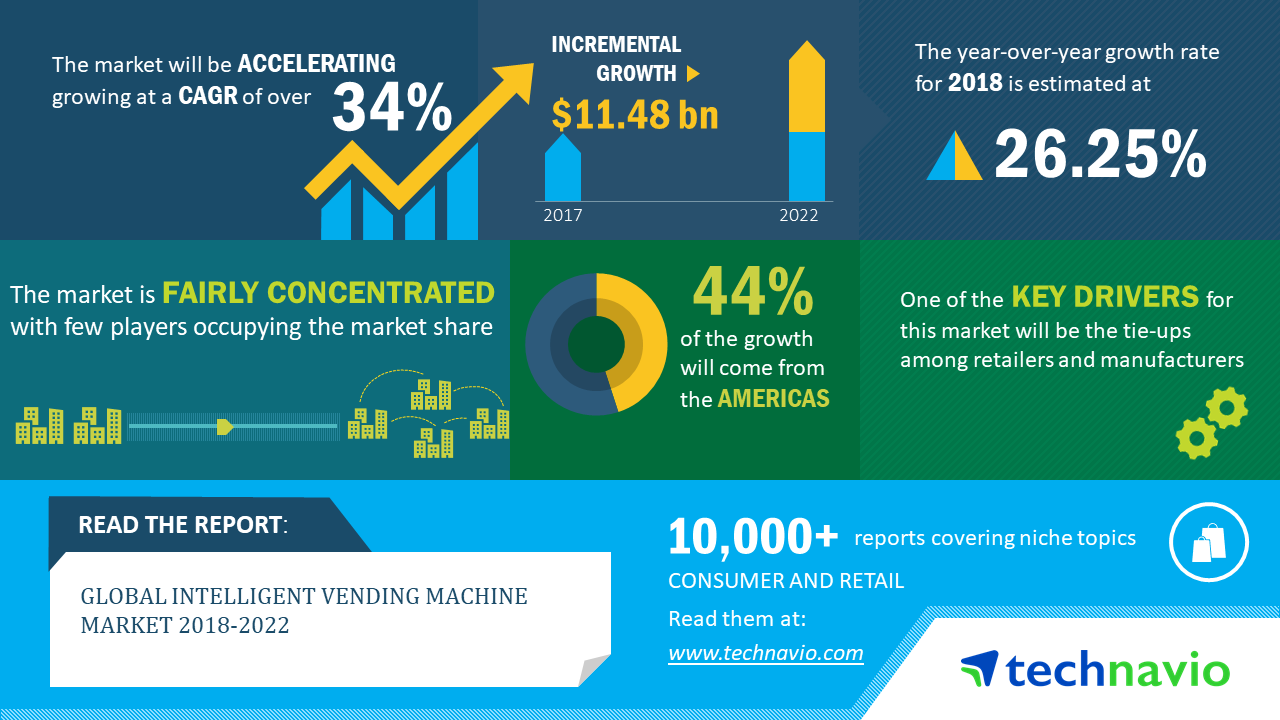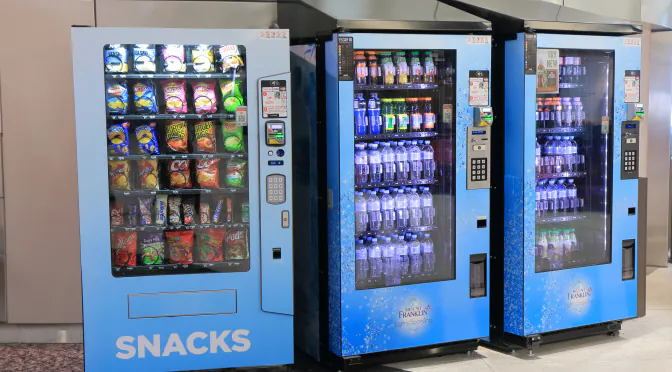The Internet and digitization are accelerating the rate of innovation and transforming multiple industries, one of which is the intelligent vending machine market. Vending machines have long been a convenient and low-cost vehicle for shrinking an entire store into a refrigerator-size revenue generator. However, most vending machines until today have been focused on collecting money, providing change and dispensing products.
Nevertheless, the vending machine industry has undergone significant change over the past few years, using smart and sophisticated technologies to deploy innovations as diverse as touch-enabled high-definition screens and remote device management software technology to go far beyond simply dispensing food and beverage.
Below are some key insights about this market from our industry experts.

Here are the top technology trends in the new smart vending machines that are shaking up the industry and transforming vending experiences.
1. Cashless payments
Though it may seem like a concept of the distant future, plastic cards, checkbooks, and even cash may completely disappear in less than a decade, with the emergence of a range of cashless payment options. Indeed, cashless and mobile payment technologies are becoming more and more commonplace. Today, a number of vending machines are equipped with a standard option of cashless payment.
This type of technology has gone from dead end to mass adoption in a short span of time, thanks to tech giants like Apple and Google, who paired near-field communication (NFC) with innovations such as Apple Pay and Google Wallet.
2. Smartphone interaction with Artificial Intelligence
While many smart vending machines offer the option of cashless payment, some vendors are taking it one step further. Some intelligent vending machines can now interact with smartphones in real time. A customer walks up to a smart vending machine, the AI-powered mobile app determines which machine it is and proceeds to pull up a real-time inventory, presenting the options to customers on their smartphone.
Recently, the beverage industry giant Coca-Cola announced its plans to debut new apps in the U.S., New Zealand and Australia that will allow users to order drinks ahead of time from a vending machine. The apps will include artificial intelligence (AI) to gather more information about customer tastes and preferences for future marketing promotions.
3. Energy-Saving Vending
Recent innovations in device management applications have enabled vendors to detect, diagnose and repair machines remotely. Coca-Cola revealed an ultra-saving vending machine in Japan that uses airtight doors and vacuum-insulated materials to ensure that beverages stay cold in the daytime without the need for refrigeration, which consumes more energy, reducing energy bills and helping to save the planet. Such platforms offer endless opportunities for the vending industry to maximize profitability and productivity.
4. Facial Recognition
Facial recognition technology was first introduced in vending machines in 2014, while many companies have been working on it for several years. The Luce X2 vending machine includes a motion sensor that knows when users are approaching and a camera that can recognize the consumer. The machine then offers a personalized menu based on the purchase history of the customer and prevents them from purchasing restricted products (such as an underage customer trying to buy cigarettes).
Many intelligent vending machine manufacturers have embraced this technology and have already launched vending machines with facial recognition technology in the commercial market.
5. Self Inventory
Sensors that are built into intelligent vending machines collect a vast amount of data, including the vending machine inventory. These groundbreaking machines use the intelligence to monitor their own stock. Simply put, these machines are capable of making smart inventory decisions for themselves. For instance, they will know to stop ordering ice cream if the temperature drops, thus protecting the product inventory and reducing waste as well as additional costs.



